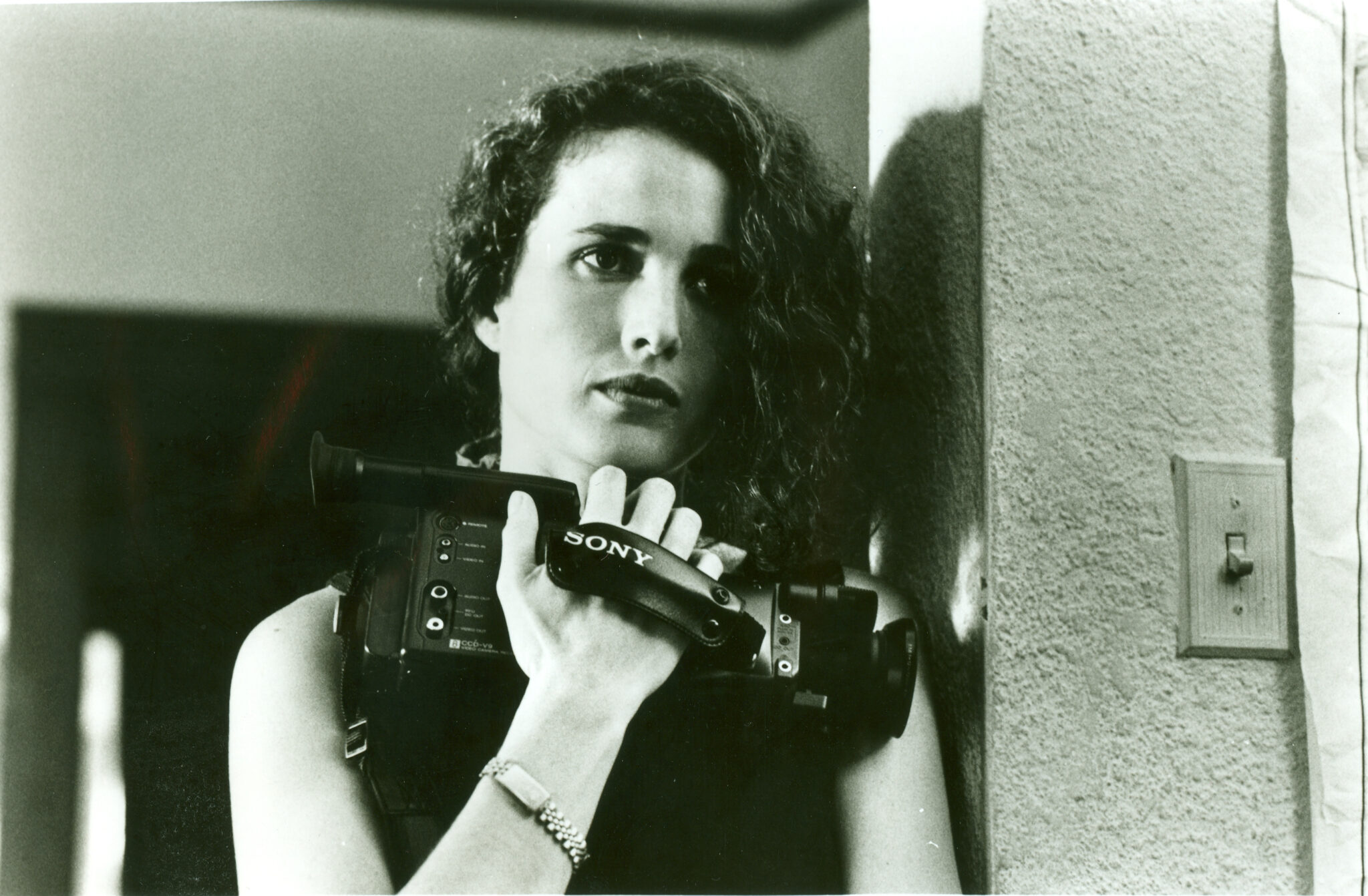By Shahnaz Mahmud
Thirty-five years ago, Steven Soderbergh debuted his feature film sex, lies and videotape at the Sundance Film Festival, forever changing the filmmaking landscape. At its core, the film demonstrates that there’s immense power in creating art that is deeply personal, especially as a means of self reflection. Sex, lies and videotape is timeless because it reaches people on a very human level. It still asks viewers to hold a mirror up to how we conduct relationships with other people — and ourselves.
Set in Baton Rouge, Louisiana., the film follows Ann, (Andie MacDowell) who feels the growing distance in her marriage, both emotionally and physically. In fact, Ann tells her therapist that she feels sick at the very thought of John (Peter Gallagher), her husband, touching her. The divide between husband and wife becomes evident when Ann learns Graham, an old college pal of John’s, will be staying with them for a short spell. Graham (James Spader) shows up on their doorstep one day with plans having already been set — unbeknownst to her.
Certain cliches run through the narrative which manage to work to Soderbergh’s desired effect. John is having an affair with Ann’s sister Cynthia (Laura San Giacomo). Added to that: he’s a bit of a smarmy lawyer. And it’s pretty much a given that Ann and Graham will inevitably end up together. But, it’s the how that shocks us into submission.
Nowadays, filmmakers, particularly first-time directors, are advised to make art that in some ways serves as a prism into their own lives. It’s here where the beauty of sex, lies and videotape emerges — we aren’t just viewing Soderbergh’s view on the world, the film connects with viewers as though we were looking at our own lives unfolding on the screen. Soderbergh himself admitted: “I went through a period of my life, in my personal relationships, when I was lying.” The filmmaker says he was bent on hurting the people around him. “I became,” he says, “someone I hated.” This was the foundation for Graham’s character and the journey he willingly takes himself on, as seen in the film.
In 1989 Soderbergh also said that sex, lies and videotape was the sum total of what he had learned about relationships. He spoke about how after filming, he traveled to New York to re-establish contact with the woman who inspired the script. Soderbergh was able to see clearly what the film was: “It’s all about people who will not say what they’re thinking unless they’re really pushed into a corner and poked. I realized how much I was like the film, how much I’m still struggling with the distance I feel between myself and other people, and my feelings, and how difficult it still is for me to feel and not instantly analyze.”
The idea of the personal story wasn’t revolutionary, of course. Just look at 1971’s The Summer of ’42, based on the memoirs of screenwriter Herman Raucher as he recollects a summer in Nantucket, Rhode Island, when he struck up a one-sided romance with an older woman whose husband had just gone off to fight in World War II. George Lucas’ 1973 coming-of-age drama American Graffiti, is entirely based on his teen years cruising around his hometown of Modesto, California, in the early 1960s. Then there’s Barry Levinson’s 1982 film, Diner, which depicts a group of friends as they move into adulthood. Legions of personal films came before those, but these had major studio muscle behind them. Summer belonged to Warner Bros., Graffiti to Universal Pictures and Diner to MGM/United Artists. sex, lies and videotape, however, was produced by the indie company Outlaw Productions and later got distribution. Miramax landed its first hit as its distributor.
Soderbergh said the initial script poured out of him in eight days, though he’d spent a year prior jotting things down in a notebook that would culminate in the film. With life reflecting onto the page, one thing led to another in the process, he also said. The relevance of this strikes the right cord: as in life, once we start opening ourselves up to others in relationships, what’s closest to the vest begins to pour out.
He filmed it in several weeks in Baton Rouge, where he called home at the time, on a budget of roughly $1.2 million. Sex, lies and videotape garnered $36.7 million at the worldwide box office.
When the film premiered at the 1989 Sundance Film Festival it won the inaugural Audience Award. It was a defining moment for the Festival, which celebrated its eleventh anniversary that year — still fairly nascent. Later in 1989, sex, lies and videotape won the Palme d’Or at Cannes, making Soderbergh, just 26, the youngest filmmaker to achieve such status. Sex, lies and videotape went on to win numerous awards and Soderbergh was nominated for Best Original Screenplay at the 1990 Academy Awards.
The film is still lauded today for its fearlessness in showing the stark truth of the filmmaker’s struggles with intimacy — and in being vulnerable— to the masses. It stands the test of time as a piece of cinema that resonates with viewers who wrestle with these same issues–those that can ultimately make or break a relationship and prevent us from truly living life to the fullest.







